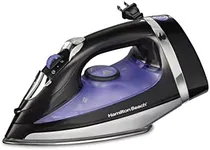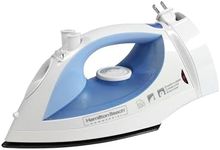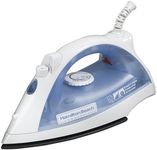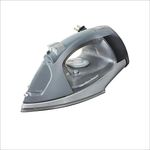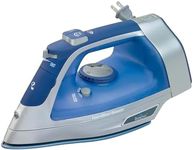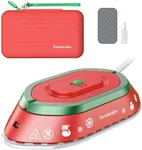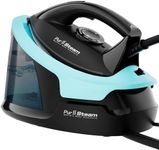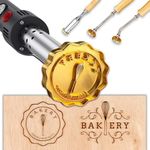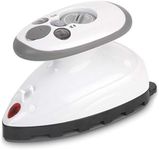Buying Guide for the Best Hamilton Beach Irons
When choosing a Hamilton Beach iron, it's important to consider several key specifications to ensure you select the best model for your needs. Irons can vary greatly in terms of features and performance, so understanding what each spec means and how it impacts your ironing experience will help you make an informed decision. Here are the key specs to consider and how to navigate them.WattageWattage indicates the power of the iron. Higher wattage means the iron heats up faster and maintains a consistent temperature, which is important for effective ironing. Irons typically range from 1000 to 3000 watts. For light ironing tasks, a lower wattage (1000-1500 watts) may suffice. For more demanding tasks or frequent use, consider an iron with higher wattage (2000-3000 watts) to ensure better performance and efficiency.
Steam OutputSteam output is crucial for removing wrinkles efficiently. It is measured in grams per minute (g/min). Irons with higher steam output can handle tougher fabrics and more stubborn wrinkles. Light steam output (10-20 g/min) is suitable for delicate fabrics, while medium (20-40 g/min) and high steam output (40+ g/min) are better for thicker fabrics like denim or linen. Choose based on the types of fabrics you frequently iron.
Soleplate MaterialThe soleplate is the flat surface that comes into contact with your clothes. Common materials include stainless steel, ceramic, and non-stick coatings. Stainless steel is durable and glides smoothly, ceramic offers even heat distribution and is gentle on fabrics, and non-stick coatings prevent fabrics from sticking. Consider your ironing habits and fabric types to choose the best soleplate material for you.
Water Tank CapacityThe water tank capacity determines how long you can iron with steam before needing to refill. Larger tanks (300-400 ml) are ideal for extended ironing sessions, while smaller tanks (200-300 ml) are lighter and easier to handle but require more frequent refills. If you often iron large batches of clothes, a larger tank will be more convenient.
WeightThe weight of the iron affects how easy it is to maneuver. Lighter irons (1-1.5 kg) are easier to handle and less tiring to use, making them suitable for quick touch-ups or smaller ironing tasks. Heavier irons (1.5-2 kg) provide more pressing power, which can be beneficial for stubborn wrinkles and thicker fabrics. Consider your strength and the duration of your ironing sessions when choosing the weight.
Temperature ControlTemperature control allows you to adjust the heat according to the fabric type. Some irons have manual dials, while others feature digital controls. Accurate temperature control is essential to prevent damage to delicate fabrics and ensure effective ironing of tougher materials. If you iron a variety of fabrics, look for an iron with precise and easy-to-use temperature settings.
Auto Shut-OffAuto shut-off is a safety feature that turns the iron off if it is left unattended for a certain period. This prevents accidents and conserves energy. If safety is a priority or if you tend to forget to turn off appliances, an iron with auto shut-off is a wise choice.
